-
 Bitcoin
Bitcoin $108,463.3266
-1.47% -
 Ethereum
Ethereum $2,535.8576
-3.62% -
 Tether USDt
Tether USDt $1.0006
0.02% -
 XRP
XRP $2.2352
-2.24% -
 BNB
BNB $658.1049
-0.63% -
 Solana
Solana $149.9207
-2.53% -
 USDC
USDC $0.9998
-0.07% -
 TRON
TRON $0.2857
0.45% -
 Dogecoin
Dogecoin $0.1659
-4.24% -
 Cardano
Cardano $0.5784
-3.85% -
 Hyperliquid
Hyperliquid $38.4944
-4.70% -
 Sui
Sui $2.9107
-4.19% -
 Bitcoin Cash
Bitcoin Cash $485.3637
-3.32% -
 Chainlink
Chainlink $13.3074
-4.18% -
 UNUS SED LEO
UNUS SED LEO $9.0499
0.41% -
 Avalanche
Avalanche $18.0347
-3.98% -
 Stellar
Stellar $0.2394
-2.23% -
 Toncoin
Toncoin $2.8110
-2.68% -
 Shiba Inu
Shiba Inu $0.0...01155
-3.23% -
 Litecoin
Litecoin $87.7967
-3.87% -
 Hedera
Hedera $0.1555
-2.87% -
 Monero
Monero $317.3839
-1.79% -
 Polkadot
Polkadot $3.4144
-4.90% -
 Dai
Dai $1.0000
-0.02% -
 Ethena USDe
Ethena USDe $1.0003
0.00% -
 Bitget Token
Bitget Token $4.4734
-2.29% -
 Uniswap
Uniswap $7.2556
-6.53% -
 Pepe
Pepe $0.0...09693
-7.27% -
 Aave
Aave $267.0924
-4.81% -
 Pi
Pi $0.4834
-3.31%
What is the risk reserve of LBank contracts? How to allocate after liquidation?
LBank's risk reserve, funded by trading fees, funding rates, and operational revenues, ensures stability by managing liquidation risks in futures and perpetual contracts trading.
May 02, 2025 at 05:49 am
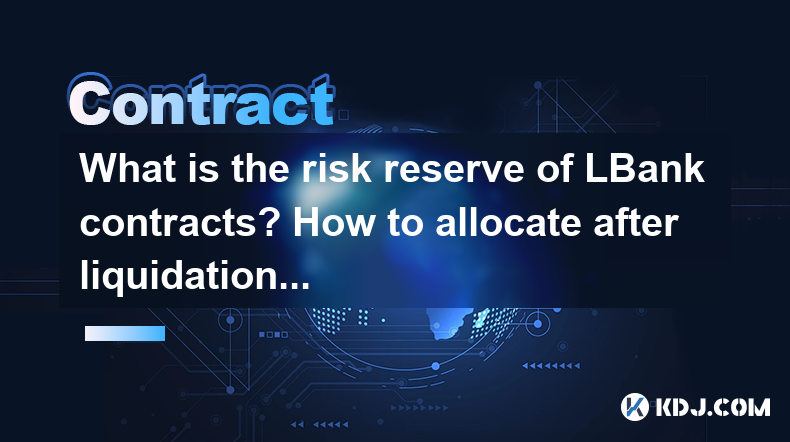
Understanding the Risk Reserve of LBank Contracts
LBank, a prominent cryptocurrency exchange, offers futures and perpetual contracts trading to its users. One of the critical components of trading on LBank is understanding the risk reserve associated with these contracts. The risk reserve is a pool of funds set aside by the exchange to manage the risks associated with leveraged trading, particularly in the event of liquidations.
The risk reserve serves as a safety net to ensure that the platform can handle the financial obligations that arise when traders' positions are liquidated. This mechanism helps maintain the stability and integrity of the trading environment on LBank. The funds in the risk reserve are typically derived from various sources, including trading fees, funding rates, and other operational revenues.
How the Risk Reserve is Funded
The funding of the risk reserve on LBank is a continuous process that involves multiple revenue streams. Trading fees are one of the primary sources of funding for the risk reserve. Every time a trader executes a trade on LBank, a small percentage of the transaction value is collected as a fee, part of which is allocated to the risk reserve.
Another significant source of funding for the risk reserve is the funding rate. In perpetual futures contracts, the funding rate is a periodic payment made between long and short positions to ensure that the contract price remains closely aligned with the underlying asset's spot price. The funding rate can be positive or negative, and the net payments are often directed towards the risk reserve.
Additionally, operational revenues from other services provided by LBank, such as staking and lending, can also contribute to the risk reserve. These diverse funding sources help ensure that the risk reserve remains adequately capitalized to handle potential liquidations.
The Role of the Risk Reserve in Liquidations
When a trader's position on LBank is liquidated due to insufficient margin, the risk reserve plays a crucial role in managing the financial implications of the liquidation. Liquidation occurs when the market moves against a trader's position, causing the margin to fall below the maintenance margin level required to keep the position open.
During a liquidation, the risk reserve is used to cover any losses that exceed the trader's available margin. This ensures that the platform can close the position at the best possible price and minimize the impact on other traders. The risk reserve acts as a buffer, absorbing the financial shock and maintaining the overall health of the trading ecosystem.
Allocation of Funds After Liquidation
After a liquidation event, the funds in the risk reserve are allocated in a specific manner to ensure fairness and transparency. The primary goal of the allocation process is to cover any losses incurred during the liquidation and to maintain the integrity of the risk reserve.
- Covering Losses: The first priority is to use the funds in the risk reserve to cover any losses that exceed the trader's available margin. This ensures that the platform can fulfill its financial obligations and close the position at the best possible price.
- Replenishing the Risk Reserve: After covering the losses, any remaining funds from the liquidation are used to replenish the risk reserve. This helps maintain the reserve's capital adequacy and ensures that it can handle future liquidations.
- Distributing Surplus: If there is a surplus after covering losses and replenishing the risk reserve, the excess funds may be distributed to other users or used to enhance the platform's services. However, this is less common and depends on the specific policies of LBank.
Monitoring and Managing the Risk Reserve
LBank employs sophisticated risk management systems to monitor and manage the risk reserve effectively. Real-time monitoring of the risk reserve's balance and the overall health of the trading environment is crucial to ensuring that the platform can handle potential liquidations.
The exchange also conducts regular stress tests to assess the risk reserve's ability to withstand extreme market conditions. These tests help identify any potential vulnerabilities and allow LBank to take proactive measures to strengthen the risk reserve.
Additionally, LBank may adjust the parameters of the risk reserve, such as the funding rate and trading fees, to ensure that it remains adequately capitalized. These adjustments are made based on market conditions and the platform's overall risk exposure.
Transparency and Reporting
Transparency is a key aspect of LBank's approach to managing the risk reserve. The exchange provides regular reports on the status of the risk reserve, including its balance, sources of funding, and any significant changes in its management policies.
These reports are made available to users through the LBank platform, ensuring that traders have access to the information they need to make informed decisions. Transparency helps build trust and confidence in the platform's ability to manage risks effectively.
Frequently Asked Questions
Q: How does LBank determine the size of the risk reserve?
A: LBank determines the size of the risk reserve based on several factors, including the total open interest in futures and perpetual contracts, historical liquidation data, and market volatility. The exchange aims to maintain a risk reserve that is sufficient to cover potential losses under various market scenarios.
Q: Can users contribute directly to the risk reserve?
A: Currently, LBank does not allow users to contribute directly to the risk reserve. The risk reserve is funded through trading fees, funding rates, and other operational revenues generated by the platform.
Q: What happens if the risk reserve is depleted during a liquidation event?
A: If the risk reserve is depleted during a liquidation event, LBank may use other available funds or implement temporary measures to manage the situation. The exchange has contingency plans in place to ensure that it can continue to operate smoothly even in extreme market conditions.
Q: How often does LBank update the risk reserve balance?
A: LBank updates the risk reserve balance in real-time and provides regular reports to users. The frequency of these reports may vary, but they are typically published on a monthly basis to keep users informed about the status of the risk reserve.
Disclaimer:info@kdj.com
The information provided is not trading advice. kdj.com does not assume any responsibility for any investments made based on the information provided in this article. Cryptocurrencies are highly volatile and it is highly recommended that you invest with caution after thorough research!
If you believe that the content used on this website infringes your copyright, please contact us immediately (info@kdj.com) and we will delete it promptly.
- Bitcoin's Pattern Break: Are HODLers the Key to the Next Surge?
- 2025-07-04 18:50:12
- Bitcoin Price, Trump's Bill, and the $150K Dream: A NYC Take
- 2025-07-04 19:50:12
- Ethereum, LILPEPE, and the July Bounce: Will Pepe Steal ETH's Thunder?
- 2025-07-04 19:10:12
- Binance Institutional Loans: Unlocking 4x Leverage and Zero Interest for Whales
- 2025-07-04 19:15:12
- Bitcoin Bull Run: Analysts Eye Peak in Late 2025?
- 2025-07-04 19:20:13
- Pepe Indicators, Bullish Forecast: Can the Meme Coin Rally?
- 2025-07-04 19:25:12
Related knowledge
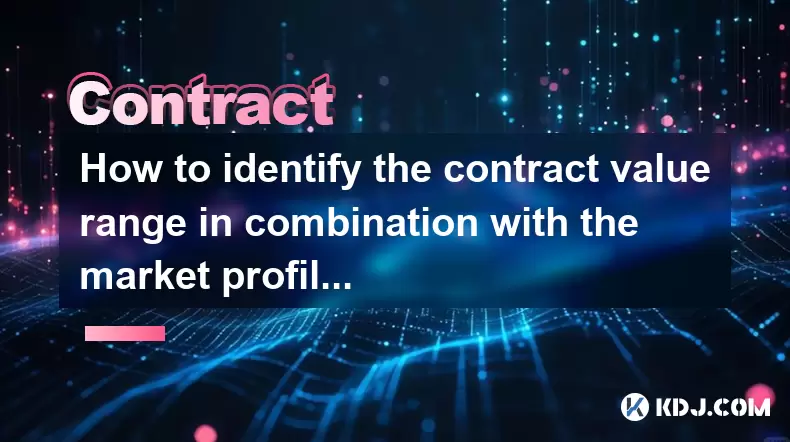
How to identify the contract value range in combination with the market profile?
Jul 02,2025 at 10:56pm
Understanding the Market ProfileTo effectively identify the contract value range in combination with the market profile, it's essential to first understand what each concept entails. The market profile is a framework that helps traders visualize how price and time interact across a given period, typically a trading day or session. It provides insights i...
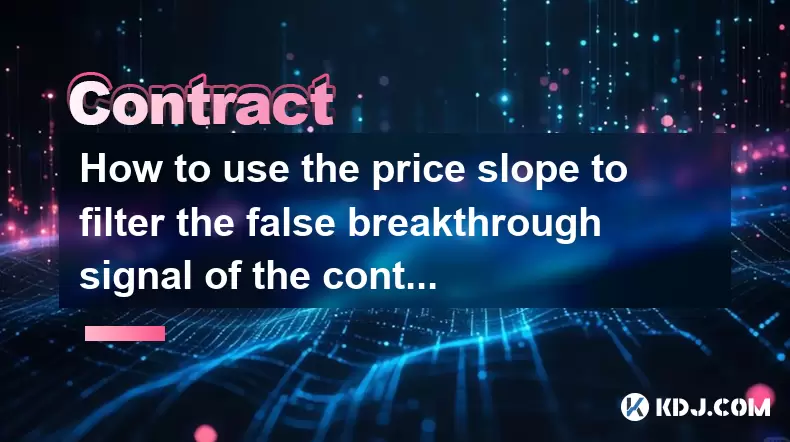
How to use the price slope to filter the false breakthrough signal of the contract?
Jun 20,2025 at 06:56pm
Understanding the Concept of Price Slope in Contract TradingIn contract trading, especially within cryptocurrency derivatives markets, price slope refers to the rate at which the price changes over a specific time period. It helps traders assess the strength and sustainability of a trend. A steep slope may indicate strong momentum, while a shallow slope...
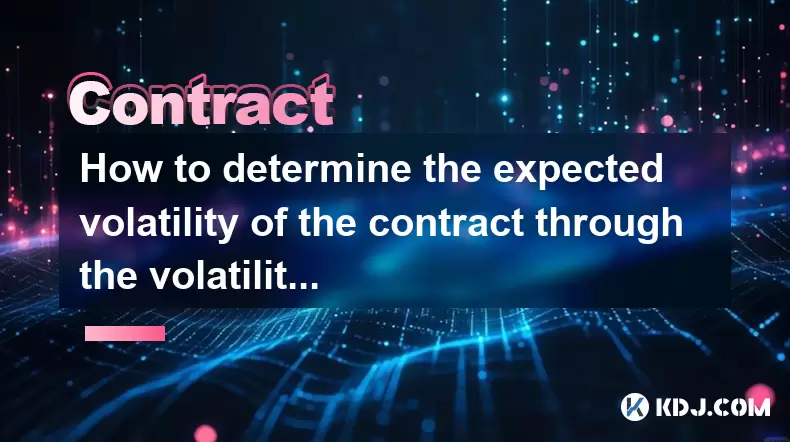
How to determine the expected volatility of the contract through the volatility cone?
Jun 19,2025 at 12:28pm
Understanding the Basics of Volatility in Cryptocurrency ContractsIn the realm of cryptocurrency trading, volatility is a key metric that traders use to assess potential risk and reward. When dealing with futures contracts, understanding how volatile an asset might become over time is crucial for position sizing, risk management, and strategy developmen...
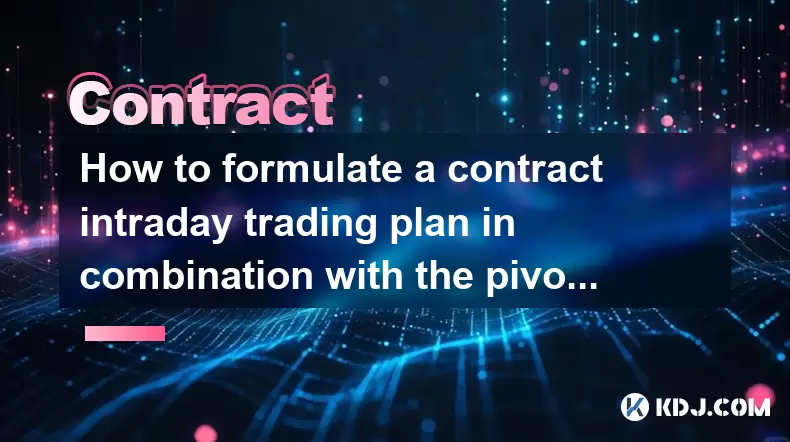
How to formulate a contract intraday trading plan in combination with the pivot point system?
Jun 21,2025 at 03:42pm
Understanding the Basics of Pivot Points in Cryptocurrency TradingPivot points are technical analysis tools used by traders to identify potential support and resistance levels. These levels are calculated using the previous day's high, low, and closing prices. In the context of cryptocurrency trading, where markets operate 24/7, pivot points help trader...
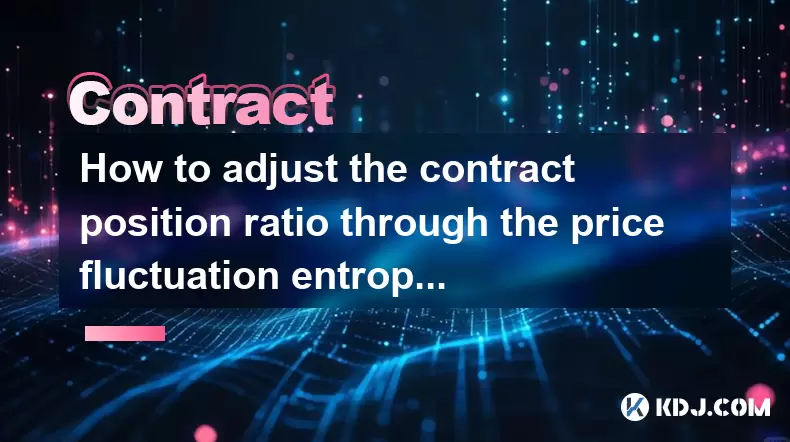
How to adjust the contract position ratio through the price fluctuation entropy?
Jun 22,2025 at 11:42am
Understanding Price Fluctuation Entropy in Cryptocurrency ContractsIn the world of cryptocurrency futures trading, price fluctuation entropy is a relatively new concept used to measure market volatility and uncertainty. It derives from information theory, where entropy refers to the degree of randomness or unpredictability in a system. In crypto contrac...
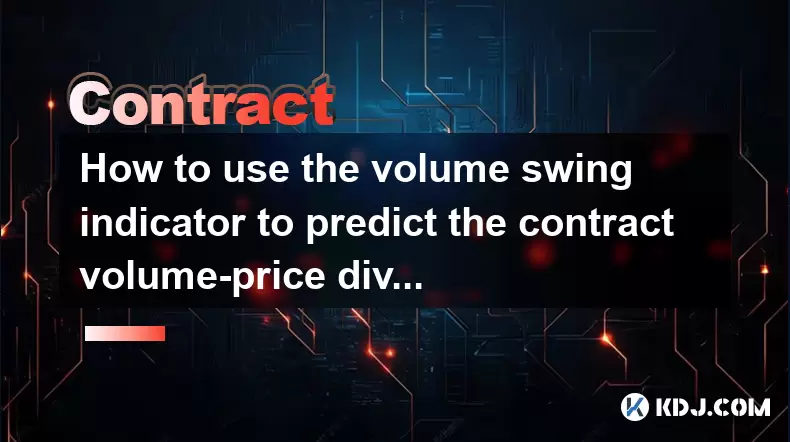
How to use the volume swing indicator to predict the contract volume-price divergence?
Jun 18,2025 at 11:42pm
Understanding the Volume Swing IndicatorThe volume swing indicator is a technical analysis tool used primarily in cryptocurrency trading to evaluate changes in volume over time. Unlike price-based indicators, this metric focuses solely on trading volume, which can provide early signals about potential market reversals or continuations. The key idea behi...

How to identify the contract value range in combination with the market profile?
Jul 02,2025 at 10:56pm
Understanding the Market ProfileTo effectively identify the contract value range in combination with the market profile, it's essential to first understand what each concept entails. The market profile is a framework that helps traders visualize how price and time interact across a given period, typically a trading day or session. It provides insights i...

How to use the price slope to filter the false breakthrough signal of the contract?
Jun 20,2025 at 06:56pm
Understanding the Concept of Price Slope in Contract TradingIn contract trading, especially within cryptocurrency derivatives markets, price slope refers to the rate at which the price changes over a specific time period. It helps traders assess the strength and sustainability of a trend. A steep slope may indicate strong momentum, while a shallow slope...

How to determine the expected volatility of the contract through the volatility cone?
Jun 19,2025 at 12:28pm
Understanding the Basics of Volatility in Cryptocurrency ContractsIn the realm of cryptocurrency trading, volatility is a key metric that traders use to assess potential risk and reward. When dealing with futures contracts, understanding how volatile an asset might become over time is crucial for position sizing, risk management, and strategy developmen...

How to formulate a contract intraday trading plan in combination with the pivot point system?
Jun 21,2025 at 03:42pm
Understanding the Basics of Pivot Points in Cryptocurrency TradingPivot points are technical analysis tools used by traders to identify potential support and resistance levels. These levels are calculated using the previous day's high, low, and closing prices. In the context of cryptocurrency trading, where markets operate 24/7, pivot points help trader...

How to adjust the contract position ratio through the price fluctuation entropy?
Jun 22,2025 at 11:42am
Understanding Price Fluctuation Entropy in Cryptocurrency ContractsIn the world of cryptocurrency futures trading, price fluctuation entropy is a relatively new concept used to measure market volatility and uncertainty. It derives from information theory, where entropy refers to the degree of randomness or unpredictability in a system. In crypto contrac...

How to use the volume swing indicator to predict the contract volume-price divergence?
Jun 18,2025 at 11:42pm
Understanding the Volume Swing IndicatorThe volume swing indicator is a technical analysis tool used primarily in cryptocurrency trading to evaluate changes in volume over time. Unlike price-based indicators, this metric focuses solely on trading volume, which can provide early signals about potential market reversals or continuations. The key idea behi...
See all articles

























































































